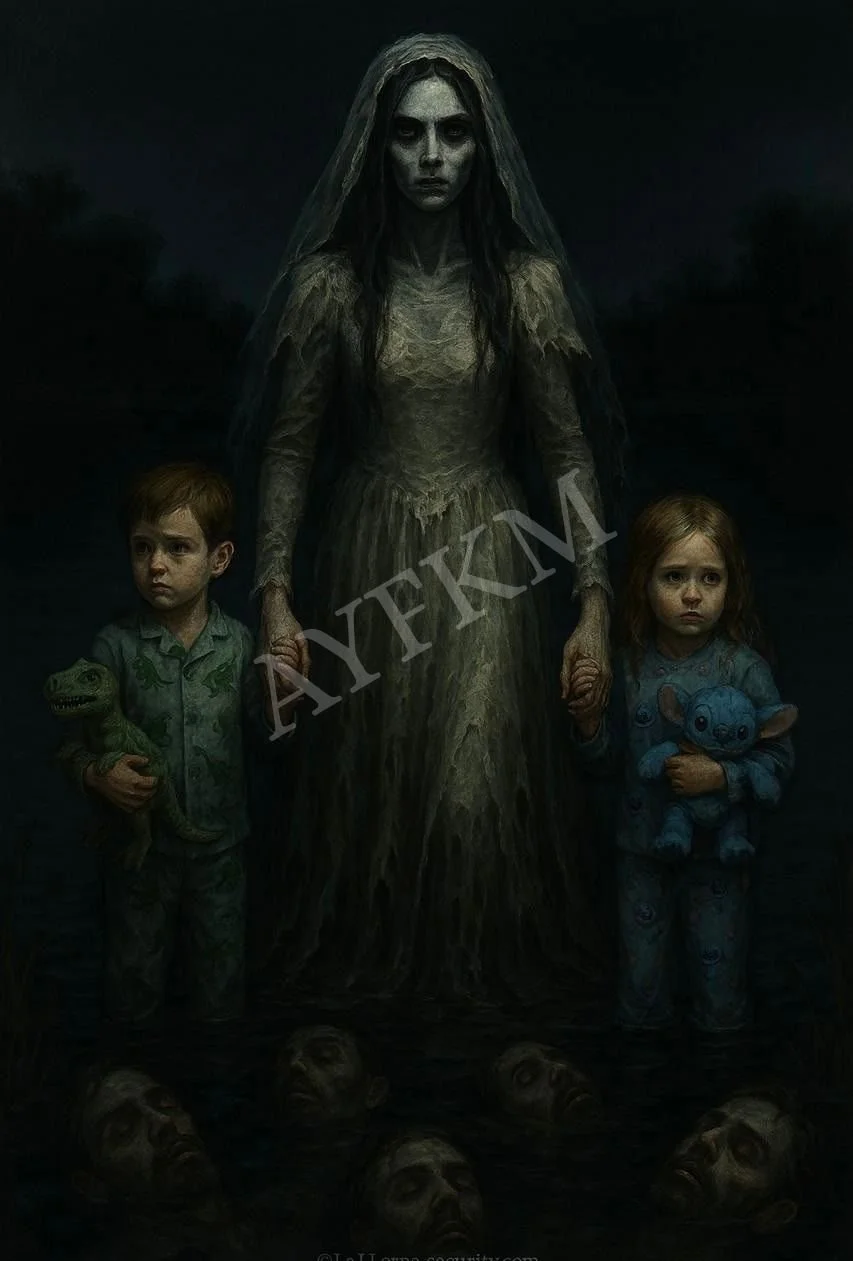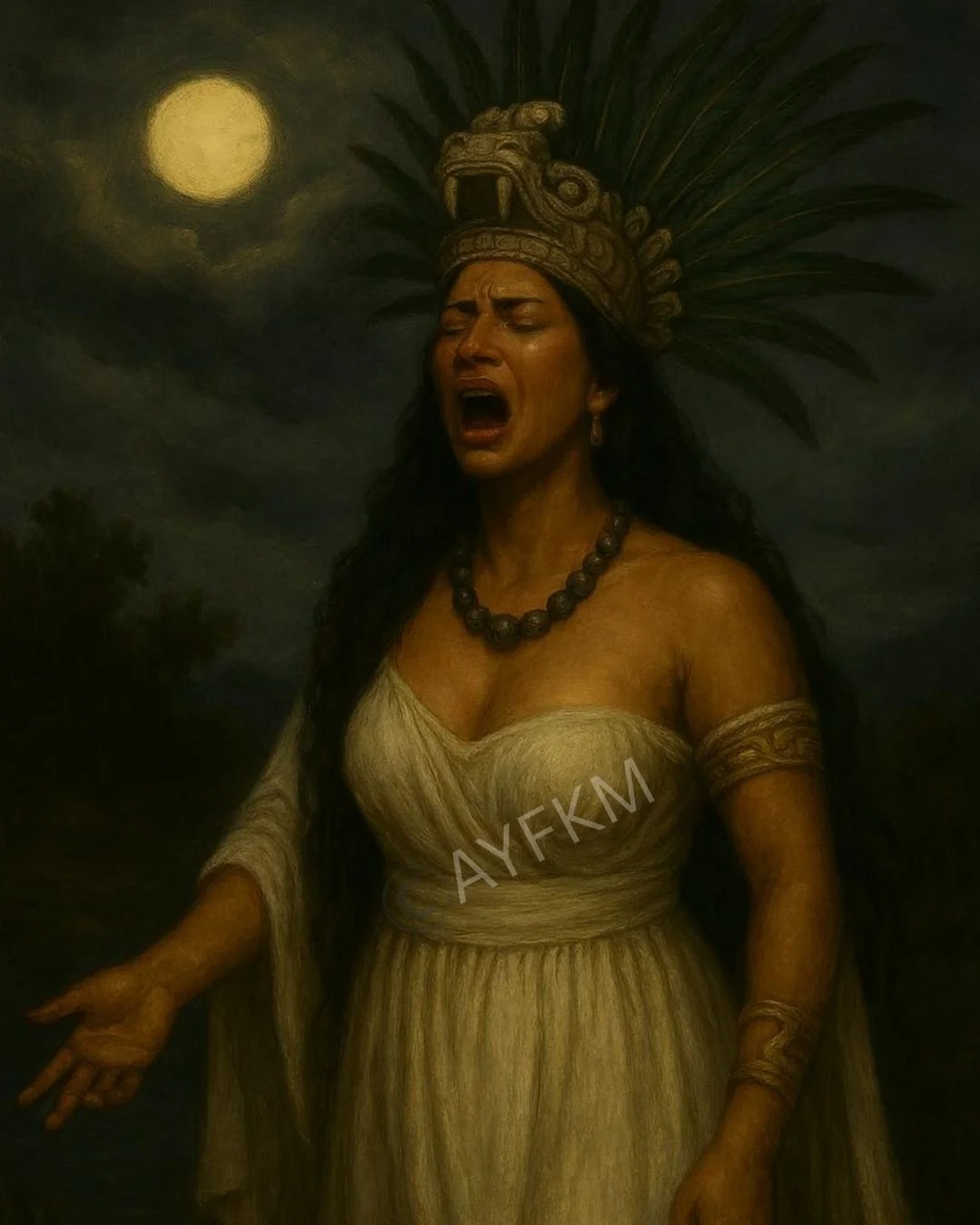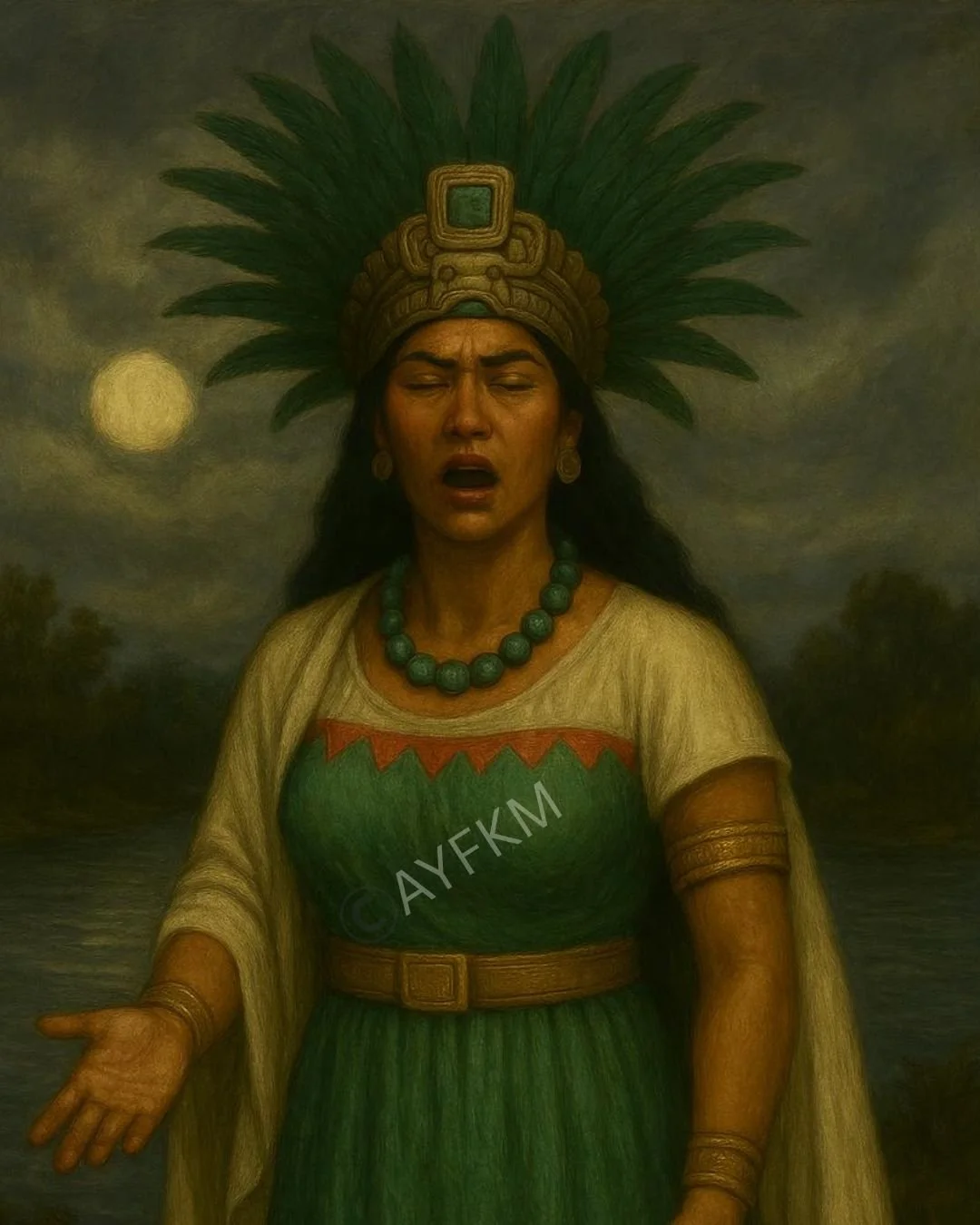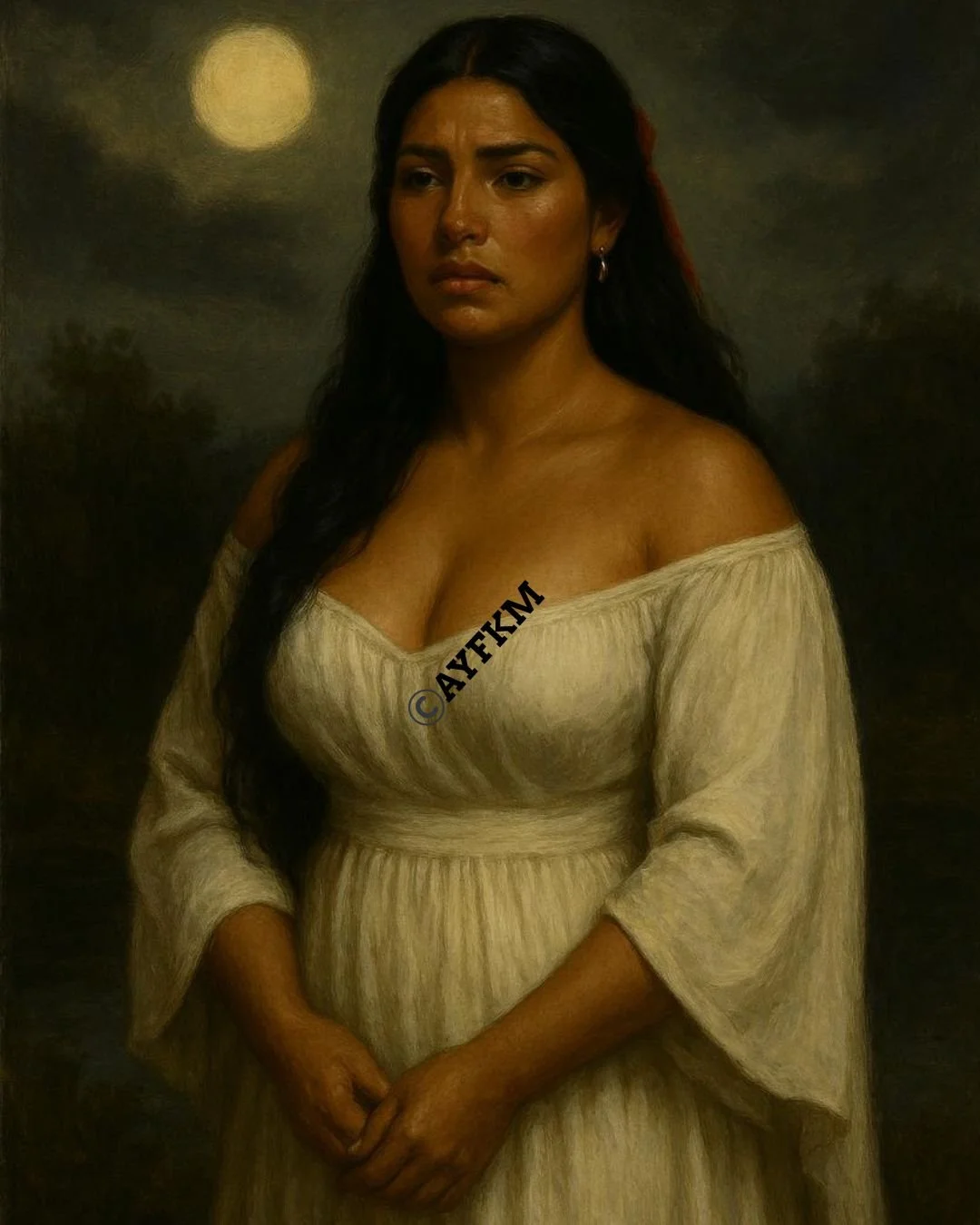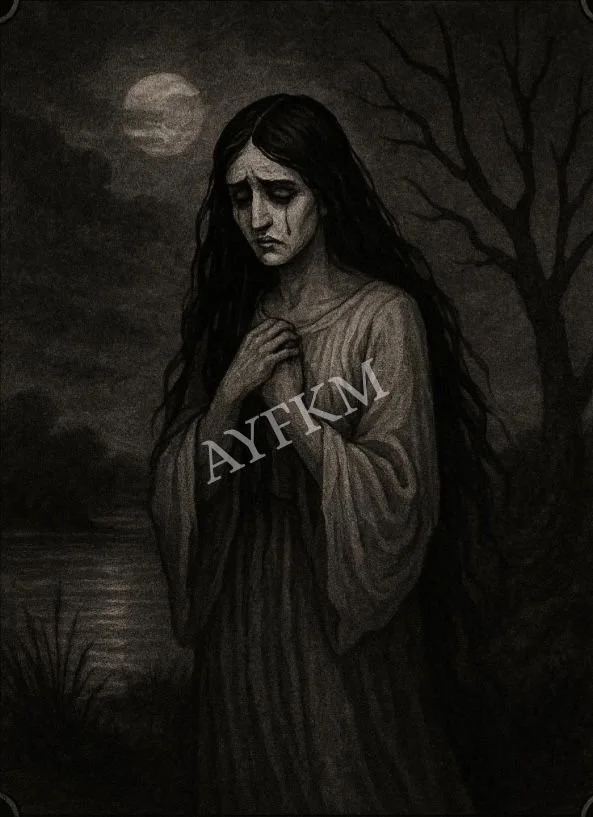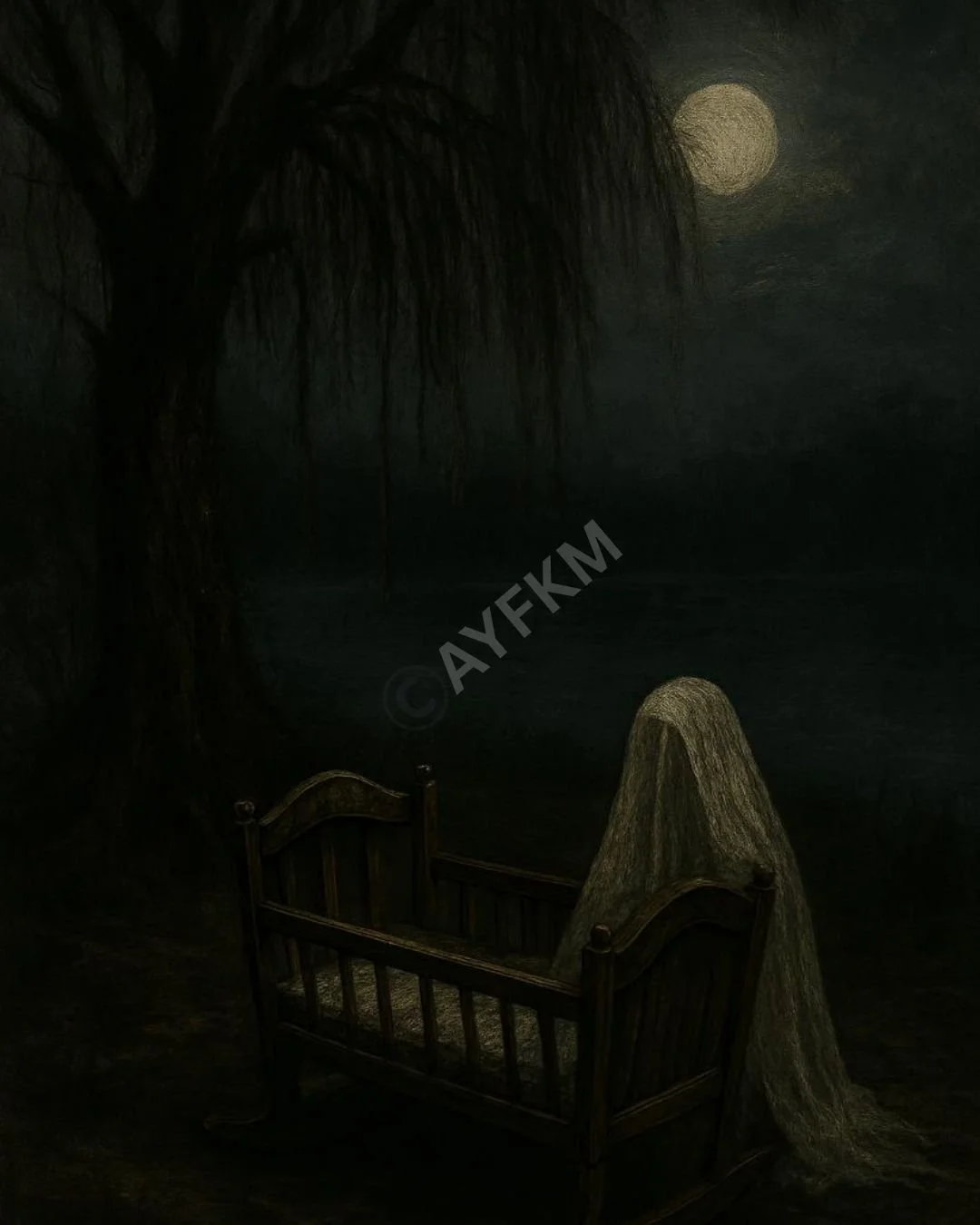La Llorona Reborn: A Gothic Retelling of Mexico’s Haunted Legend
It all begins with an idea.“The river never forgets. Even now, in the stillness of dusk, when the fog settles low and the water flows quiet as breath, you can hear her. The crying—not loud, but aching. A sound that claws at memory. Some say she drowned her children. Others say they were stolen from her, lost to time and madness. But in every telling, one truth remains: La Llorona wanders the banks, veil wet with grief, calling out for what she can never reclaim. And if you hear her—really hear her—don’t look. Don’t answer. Because La Llorona doesn’t weep for you. She weeps for what she wants from you.”
Image created by AYFKM Team. Watermarked with AYFKM branding
🕯️ Who Was La Llorona?
La Llorona wasn’t just a woman undone—she was grief personified. A mother cracked open by betrayal. A soul punished, not just by others but by her own sorrow. Trauma clung to her long after the breath left her lungs.
She’s painted as a restless spirit, caught in an endless loop of regret—searching for the children she lost, heartbroken and hollowed out. But her story runs deeper. It’s threaded through ancient Aztec and Mexican myths, wrapped in centuries of longing and loss.
Some trace her back to Cihuacóatl, the serpent goddess who mourned her fallen sons and walked beside women in childbirth. Others say she was born of colonial cruelty—a beautiful Indigenous woman left with children and no future when a Spanish conquistador cast her aside. That version—the betrayed lover abandoned by power and privilege—is the one that lingers most.
Her name, “La Llorona”—The Weeping Woman—echoes like a warning. They say you hear her before you see her, her cries rising from misty rivers and forgotten lakes: ¡Ay, mis hijos! It’s not just a cry—it’s a curse. Men are warned to turn away from the woman in white by the water. Women clutch their children close.
Was She Real?
She wasn’t one woman, but she was everyone. A whisper passed down through generations, her legend etched in oral folklore from Mexico to the American Southwest.
You won’t find her in historical records, but you’ll find her in warnings, lullabies, and bedtime threats. Her earliest written mention was in the 1800s, but echoes of her grief show up in pre-Hispanic texts like the Florentine Codex.
La Llorona became a stand-in for the grief we don’t speak aloud—a ghost for the unspoken consequences. Parents who neglect, lovers who stray, children who wander near water... she was always waiting.
Cihuacóatl: The Serpent Woman
The most direct tie to mythology.
Cihuacóatl was an Aztec goddess—fierce and maternal—often seen weeping in white, wandering the night.
She was an omen of conquest and sorrow. Her cries warned of death.
In some stories, she mourned children lost in battle, roaming the streets in agony. A goddess laid low by grief—eerily familiar.
Chalchiuhtlicue: She of the Jade Skirt
Goddess of water, life, cleansing—and destruction.
Her name means Jade Skirt, a nod to transformation and fertility. But there’s a duality: she could heal or drown. Her domain was rivers, lakes, springs... places La Llorona would later claim as her own.
She ruled the Fourth Sun in Aztec creation myths, which ended in floods—a divine drowning. La Llorona’s curse echoes this watery ending.
She was both life-giver and life-taker. Just like La Llorona, she held power that could save—or destroy.
Colonial Betrayal & Cultural Trauma
La Llorona is often remembered as María, an Indigenous woman cast aside by a Spanish nobleman after bearing his children. He leaves her for someone more "acceptable"—someone with European blood and higher status.
In some stories, she's linked to La Malinche, Hernán Cortés’ interpreter. A real woman remembered as both mother of mestizo Mexico and a symbol of betrayal.
But La Llorona's legacy is deeper than one name. She embodies the violence of colonization—the way Indigenous women were used, discarded, and erased.
Her drowning of her children becomes a symbol: cultural obliteration, severed identity. Her haunting is resistance—a ghost refusing to be forgotten.
The white gown she wears? It’s layered. In one version, it’s her wedding dress—a reminder of broken promises. In another, it’s worn in defiance, just before she walks into the river. Either way, it's soaked in sorrow and loss. A uniform of grief.
©AYFKM
Copycats
In 1986, Juana Léija tried to drown her children in Houston. She said she was La Llorona—claiming her pain came from domestic abuse and despair.
Her story stirred something uncomfortable: how myth and trauma blur. How La Llorona isn’t just legend. She’s a mirror for real suffering.
What Happened to Her?
Grief doesn’t slam the door—it slips in. Quiet. Rotting. Patient.
Betrayed by the man she loved, denied the life she deserved, La Llorona began to unravel. The world turned cold. Her children, once symbols of love, became reminders of loss.
The descent is slow. It creeps.
Some say she killed them out of spite—to wound the man who abandoned her. Others say madness and sorrow swallowed her whole, and in her despair, she did the unthinkable.
The moment the river claimed her children, everything changed. She screamed—not like a monster, but like a mother breaking apart. Her cries shook the night.
Then she stepped into the same water.
She vanished—but not really.
Her death didn’t end the story. It birthed the ghost.
Now she’s caught between worlds, walking the edges of rivers, searching for what she lost. Her cries aren't just sorrow—they’re rebellion. They carry the silence of women erased, the ache of love denied, the weight of legacies stolen.
Why Does She Haunt?
©AYFKM
La Llorona does not wander to find her children. She haunts because the cradle remains.
Beneath the willow tree, it waits— empty, weathered, and stained by time. Her veil, once white, now dirt-marked and torn, hangs like a forgotten vow over its edge.
There are no children here. Only the imprint of what was. Only the silence that follows a lullaby never sung.
She does not scream to punish. She screams because the cradle is still there. Because grief, when left unburied, becomes ritual.
Some say she steals children to replace her own. Others say she punishes the ones who mirror her mistakes.
And unfaithful men? She doesn’t seduce them. She mourns near them, lures them in with her anguish, and pulls them under—because sorrow is seductive when it’s all you know.
Her legend splinters.
In Guatemala, she haunts ravines. In Venezuela, she attacks women she believes stole her lover. In the American Southwest, she drifts across dry rivers, her cries caught in the dust.
But always, she is grief made flesh. A warning, cloaked in white.
And she’s always watching.
Conclusion - Crying in the Mist
La Llorona lives on because we still need her.
She’s the rage we weren’t allowed to express. The sorrow we buried. The myth that refuses to fade.
She cries for the children she lost. For the women denied love. For every soul stripped of identity.
And through her, there’s an offering:
To artists who build community from shadows. To misfits, mothers, and survivors. To anyone who’s stood by the water and felt something watching back.
La Llorona still weeps. And we… we're still listening.


